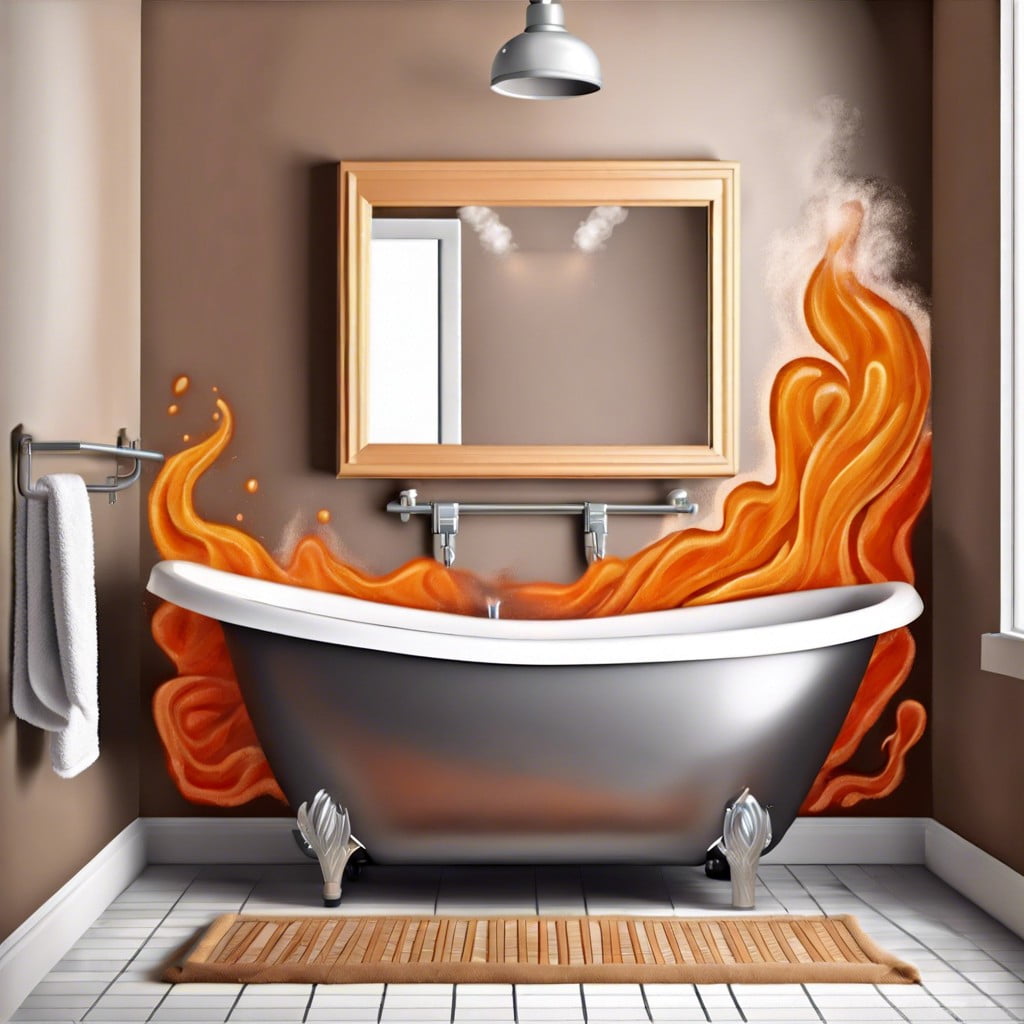Last updated on
Learn how quickly you can shower after painting your bathroom to avoid damaging the new paint job.
Key takeaways:
- Different paint types have different drying times.
- Latex-based paints require at least 24 hours before showering.
- Oil-based paints need 24 to 48 hours to fully cure.
- Humidity slows down drying, while ventilation speeds it up.
- Optimize drying by using good airflow and raising the room temperature.
Factors Affecting Paint Drying Times

The type of paint you choose plays a significant role in drying times. Oil-based paints typically take longer to dry compared to their water-based counterparts, which might be touch-dry within a couple of hours.
Temperature and airflow in your bathroom also influence how quickly paint dries. Warmer conditions with good air circulation generally promote faster drying, whereas colder, more humid conditions can significantly prolong it.
The number of coats applied affects drying as well. Each additional layer adds to the drying time, making it crucial to allow the first coat to dry thoroughly before applying the next.
Lastly, the overall thickness of each paint layer can extend drying, with thicker layers taking more time to set completely than thinner ones.
Recommended Wait Time for Different Paint Types
Latex-based paints, which are popular for their quick drying time, generally require at least four hours before they are dry to the touch. However, for a bathroom setting where moisture is frequent, waiting a full 24 hours before taking a hot shower is a wiser choice to avoid any paint anomalies like wrinkling or running.
Oil-based paints are more demanding in terms of drying. These paints might feel dry after six to eight hours, but they actually need a solid 24 to 48 hours to cure fully in a humid environment like a bathroom. Showering before this period can severely affect the finish and durability of the paint.
For those who use a quick-drying or one-coat paint, it might be tempting to cut these times short. Resist the urge! Even these modern formulations benefit from a full day’s wait, ensuring that the paint has thoroughly hardened and is resilient to the typical bathroom humidity.
By understanding the different wait times required by paint types, you can plan your bathroom renovation accordingly and avoid any painting pitfalls.
How Humidity and Ventilation Affect Drying Time
Humidity is like an uninvited guest at a paint-drying party—it can significantly slow down the process. In a highly humid environment, the water in the paint takes longer to evaporate. This means the higher the humidity, the longer you should wait before turning that shower back on.
On the flip side, proper ventilation can kick out this unwelcome guest faster. A well-ventilated bathroom allows air to circulate, speeding up the evaporation of water from the paint. So, if you’re eager to get that shower going, make sure the area is well aired.
Opening windows or using an exhaust fan can make a substantial difference. Just remember, the goal is to create an environment where air moves freely, helping that fresh coat dry swiftly and effectively.
Tips for Speeding Up the Drying Process
To get that paint dry faster, good airflow is your best friend. Crack open a window or run an exhaust fan to keep the air moving. A fan pointing directly at the walls will speed up the process remarkably.
Another handy trick is to raise the room temperature slightly. A warmer environment helps evaporate the solvents in the paint faster, reducing drying time.
If you’re in a pinch and need the walls dry pronto, consider using a hairdryer. Keep it on a low setting and maintain a safe distance from the wall to avoid damaging the paint.
Lastly, apply thin layers of paint. Thicker coats take longer to dry. If more than one coat is needed, let the first one completely dry before adding another; this keeps drying efficient and even.
The Risks of Showering Too Soon
Jumping into the shower before your bathroom paint has properly set can spell disaster for your fresh coat. The steam and moisture from a hot shower can cause the paint to soften, leading to unsightly streaks or even peeling. This not only ruins the look of your bathroom but could lead to additional costs and efforts in touch-ups or complete repaints.
Moreover, excess humidity before the paint has fully cured can prevent it from drying to a hard, durable finish. This leaves your walls more susceptible to damage and mold growth, compromising the hygiene of your bathroom. Patience pays off by preserving the quality and longevity of your paint job. So, give your paint the time it needs to truly settle in.
Recap




